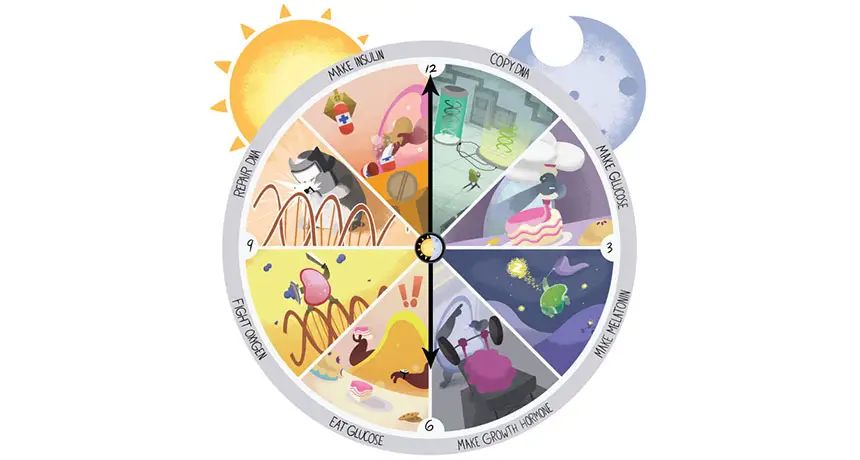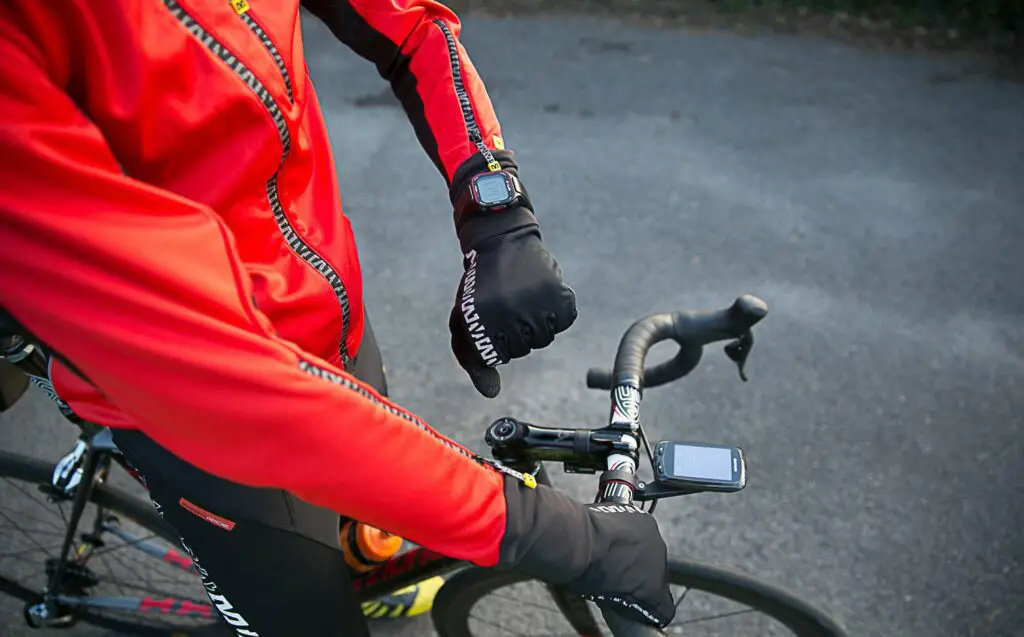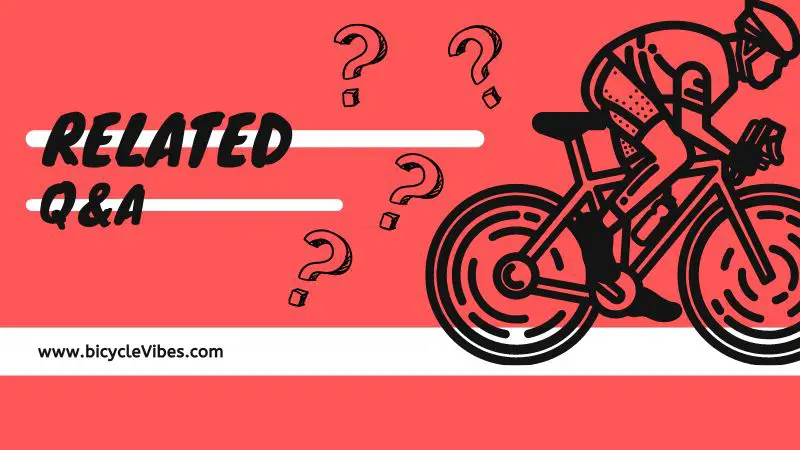
What’s the best time of day to plan a cycling trip? Is it better in the morning, midday, afternoon, or evening? Here are some answers to help you optimize your outings.
There are individuals known as the early risers, belonging to the “Lions” group. They naturally wake up at the crack of dawn, feeling energetic and highly efficient in the morning. On the other hand, we have the evening people, referred to as “wolves,” who find it challenging to wake up early and perform at their best immediately after getting out of bed. However, their productivity tends to increase as the day progresses.
Alternatively, some individuals fall into the category of “dolphins,” being light sleepers, while others are considered “bears” with a neutral rhythm. The “bears” are generally productive from mid-morning to mid-day. Whatever your chronotype may be, there’s no need to feel guilty because it’s influenced by your genes!
Table of Contents
The organism is subject to biological rhythms

Our lives are governed by a circadian rhythm, a 24-hour cycle that alternates between wakefulness and sleep. This rhythm influences various aspects of our physical and mental well-being. It is regulated by a complex network of about 10,000 neurons in the hypothalamus, which control essential functions such as body temperature, hormone secretion, heart rate, blood pressure, and respiratory rate. Additionally, this internal clock impacts our mood, memory, attention, perception, motor skills, and other cognitive abilities.
Nearly all biological, metabolic, physiological, and psychological processes in our bodies operate in circadian cycles, experiencing regular fluctuations. As a result, our energy levels, muscular strength, endurance, and reactivity undergo changes throughout the day, marked by peaks and troughs. However, these variations are not random occurrences. They are intricately tied to the circadian rhythm, orchestrating the ebb and flow of our bodily functions.
Read this book about biological rhythms…
What are these fluctuations due to?
Let’s not forget that we, as animals, are highly sensitive to the cycles of daylight and darkness. Our days revolve around work, meals, physical activities, and social interactions, all of which follow a rhythmic pattern. Furthermore, there are two major synchronizers in our bodies:
The first clock is located in our kidneys, responsible for releasing the stress hormone cortisol in the morning. Its peak occurs between 6 and 8 a.m., promoting wakefulness, and gradually decreases throughout the day until it reaches its minimum in the evening.
The second clock resides in our brain, known as melatonin. Melatonin secretion readies the body for rest, helping us fall asleep and maintain sleep. Typically, its production increases with the diminishing light levels, rising notably around 9 p.m., and reaching its highest point between 2 and 4 a.m.
While similar, the circadian rhythm and chronotype each play distinctive roles. The former determines the levels of sleepiness and alertness we experience throughout the day. On the other hand, the latter governs how our circadian rhythm influences our daily life.
Read this also: How To Plan A Bike Commute Route
Be precise to optimize your outings!

Recognizing signs of difficulty in waking up or falling asleep can serve as valuable indicators of your body’s rhythms. For a more precise understanding, consider monitoring your waking temperature. If it measures around 36.5°C, it suggests you lean towards being an evening person, while approximately 37°C indicates a preference for mornings.
Chronobiology plays a vital role in nutrition as it helps regulate when the body receives the nutrients it needs. Similarly, in sports, understanding chronobiology aids in determining the optimal time for cycling sessions. Different intensities and exercise modes are favored at specific times of the day, aligned with hormonal secretion patterns.
During the early morning, between 6 and 8 a.m
Cortisol levels peak, indicating that it’s an ideal time to kickstart your day. This stress hormone prompts the body to become active, raising body temperature and enhancing fat and protein metabolism. Cycling during this time enhances alertness, which is further invigorated by exposure to sunlight. However, it’s crucial not to exert excessive pressure on the pedals, as the cortisol surge can excite the heart muscle. Additionally, glucose levels might be relatively low in the morning, making it essential to avoid potential risks of hypoglycemia or vagal malaise.
Between 10 am and 12.30 pm to lose weight
A few hours ago, breakfast was consumed, and now digestion is finished. As a result, blood sugar and insulin levels are low, creating an ideal condition for fat elimination. Engaging in endurance aerobic exercise serves as an effective method to burn calories. It’s essential to note that peak alertness typically occurs around 10 a.m., providing an opportune moment to focus on refining your technique. So, take advantage of this time and get active!
Between noon and two o’clock to clear your head
Taking a break during the day provides a valuable opportunity to oxygenate, relax, and decompress. Upon returning to the office, you’ll feel recharged and revitalized. The release of endorphins during this time puts you on cloud nine, while dopamine works its magic, reducing fatigue and enhancing alertness. Additionally, serotonin plays a significant role in influencing mood and anxiety levels positively.
In the afternoon, to maximize
By 3pm, our bodies are brimming with cortisol and sugar levels. Interestingly, this makes it an opportune time for engaging in intensive outings or physical activities. Additionally, around 4pm, the body experiences a second peak of alertness, which can be advantageous for productivity and focus during afternoon tasks.
In the evening for a better night’s sleep
Cycling four to eight hours before bedtime has been found to enhance the quality of your sleep at night. This exercise has been shown to increase the amount of deep slow-wave sleep compared to REM sleep, leading to more restorative rest. Moreover, engaging in cycling can reduce the duration of nocturnal awakenings, contributing to a more uninterrupted and refreshing sleep experience.
Related Q&A

When is the best time to take my bike out?
The best time depends on your body’s rhythm and stress levels.
How can I determine my ideal time?
Listen to your body, observe when you feel most energized and in tune.
Does cycling before bedtime affect sleep?
Cycling before bedtime can improve sleep quality, increasing slow-wave sleep.
What about the duration of nocturnal awakenings?
Cycling can reduce nocturnal awakenings, leading to more uninterrupted sleep.
What if I’m a late sleeper?
If you sleep late, consider cycling between 9 pm and 10 pm.
Can cycling impact sleep onset?
Cycling might slightly delay falling asleep but improves overall sleep quality.
How does cycling benefit late afternoon sessions?
Afternoon cycling can help rebalance circadian rhythms for those working shift hours.
Does cycling enhance alertness?
Yes, cycling stimulates endorphin release, boosting alertness during the day.
What kind of sleep does cycling promote?
Cycling increases deep slow-wave sleep, vital for restorative rest.
Ultimately, when should I take my bike out?
Choose the time that aligns with your body’s cues and feels least stressful.
Final Words
Undoubtedly, the ideal time for a bike outing is the time that suits you best. It’s the moment when you feel least stressed and in harmony with your biorhythms. The key is to listen to your body and its signals. Pay attention to the periods when you feel most energized, motivated, and ready to embark on a cycling adventure. Honoring your body’s natural rhythms and preferences will not only make the experience more enjoyable but also optimize the benefits you derive from the activity. So, trust your instincts and choose the time that feels just right for you!








